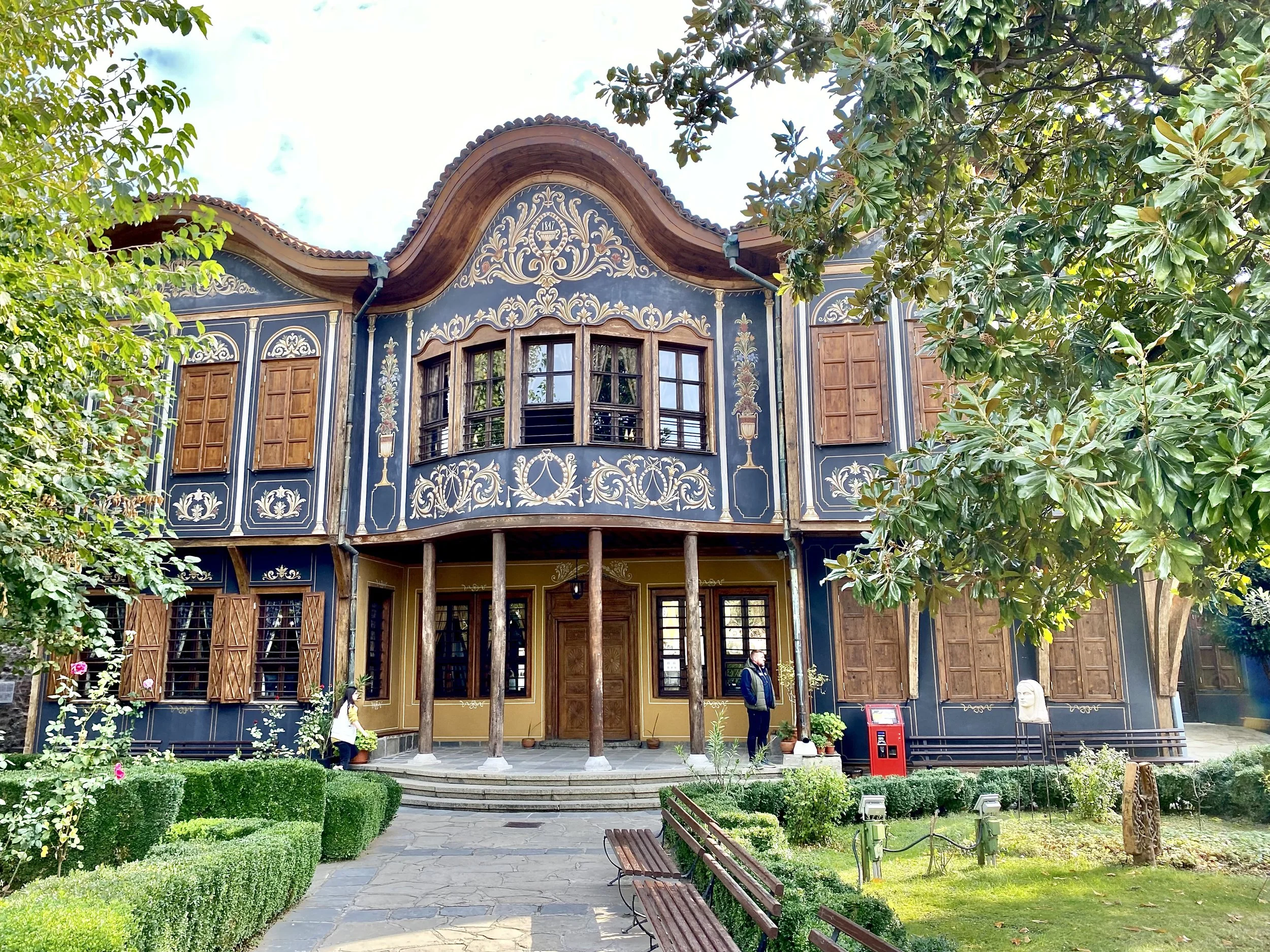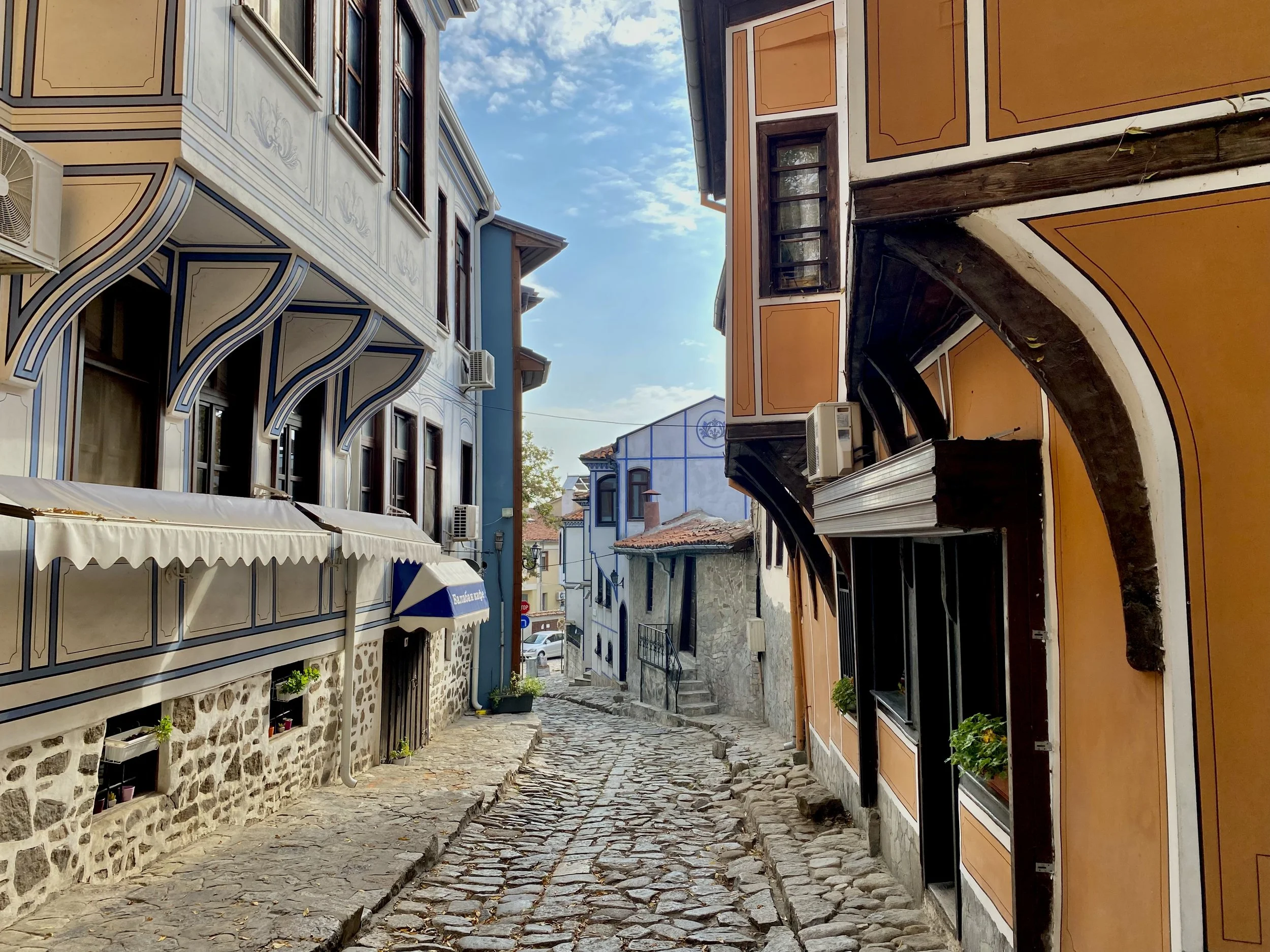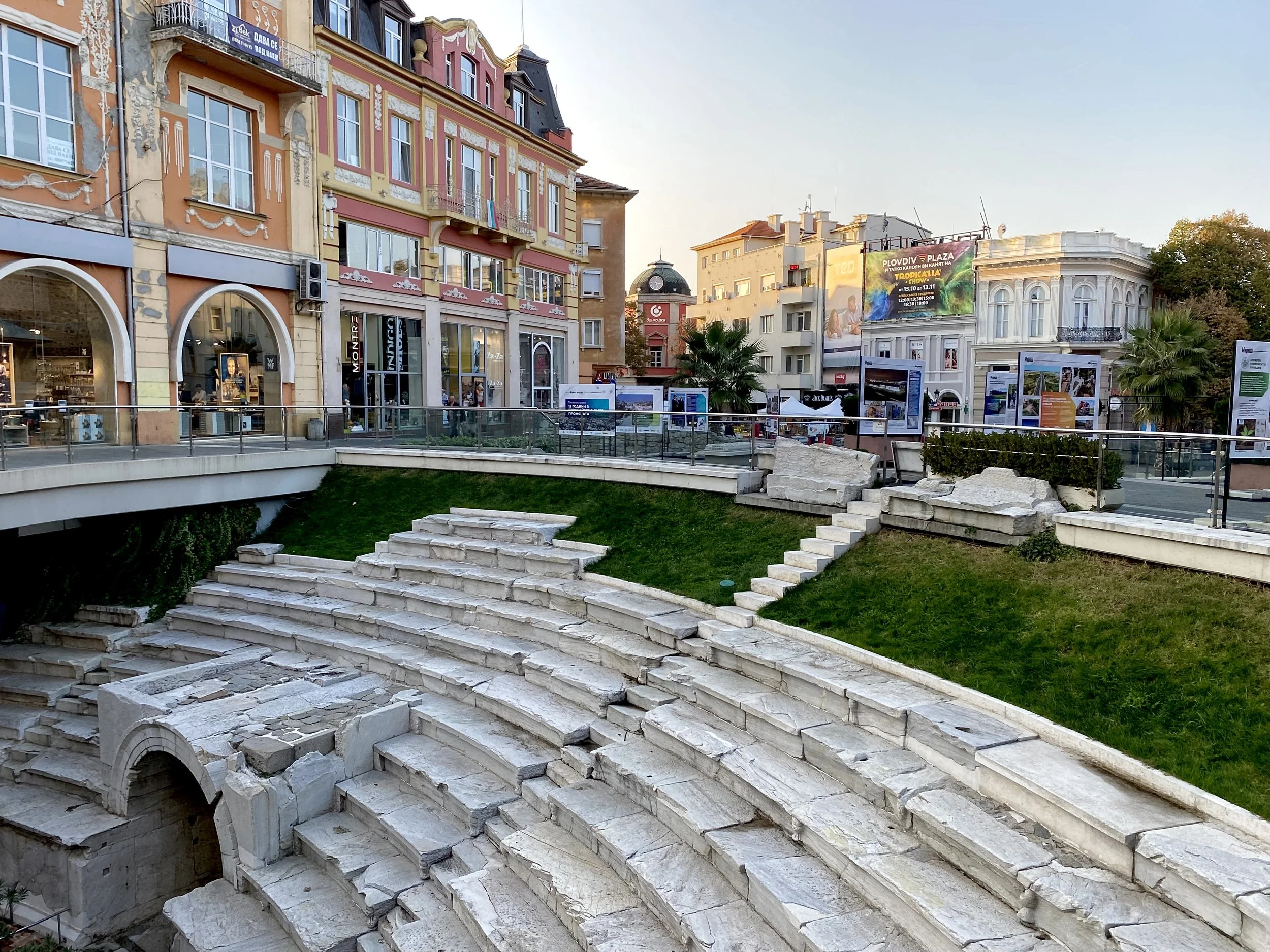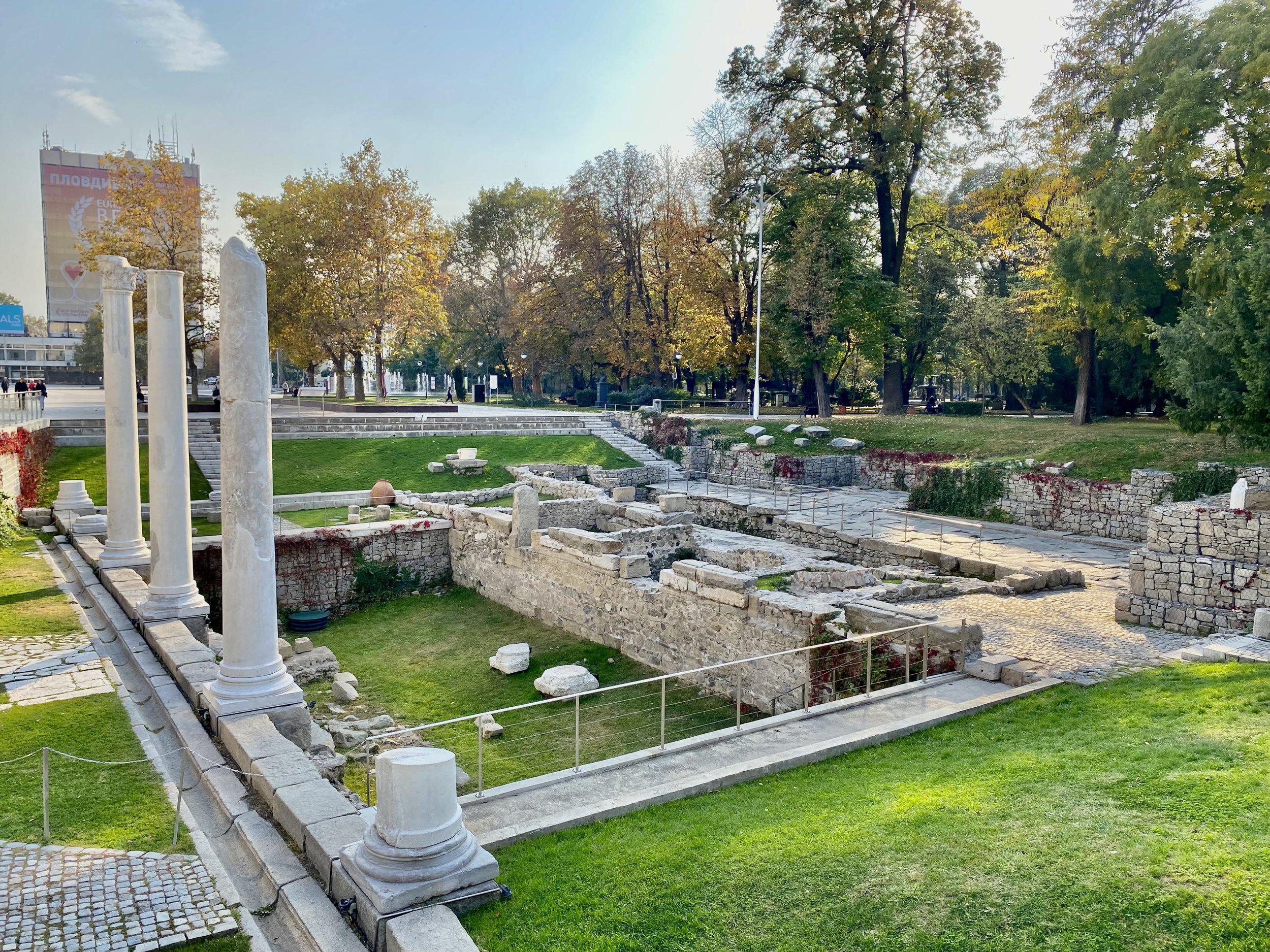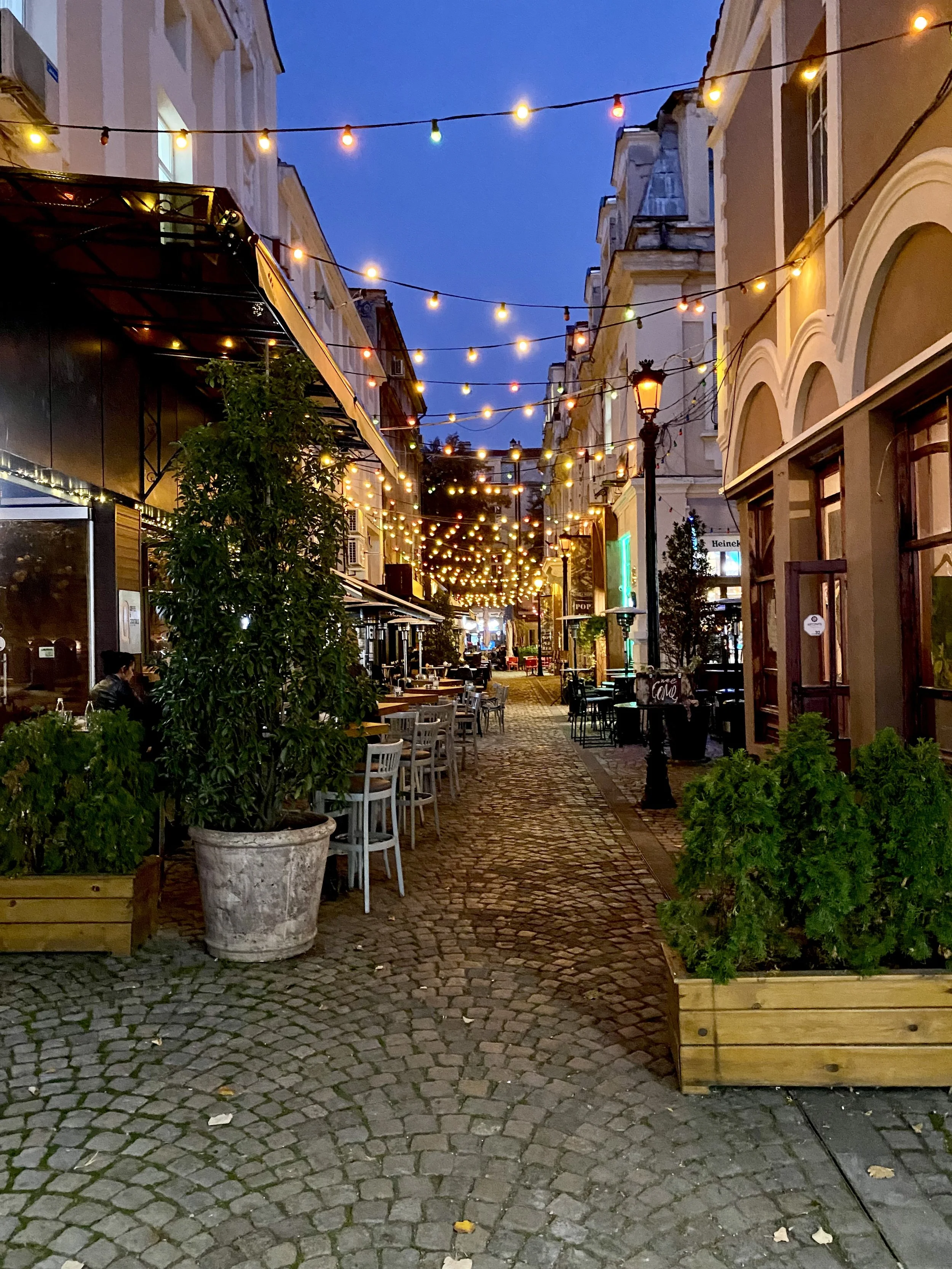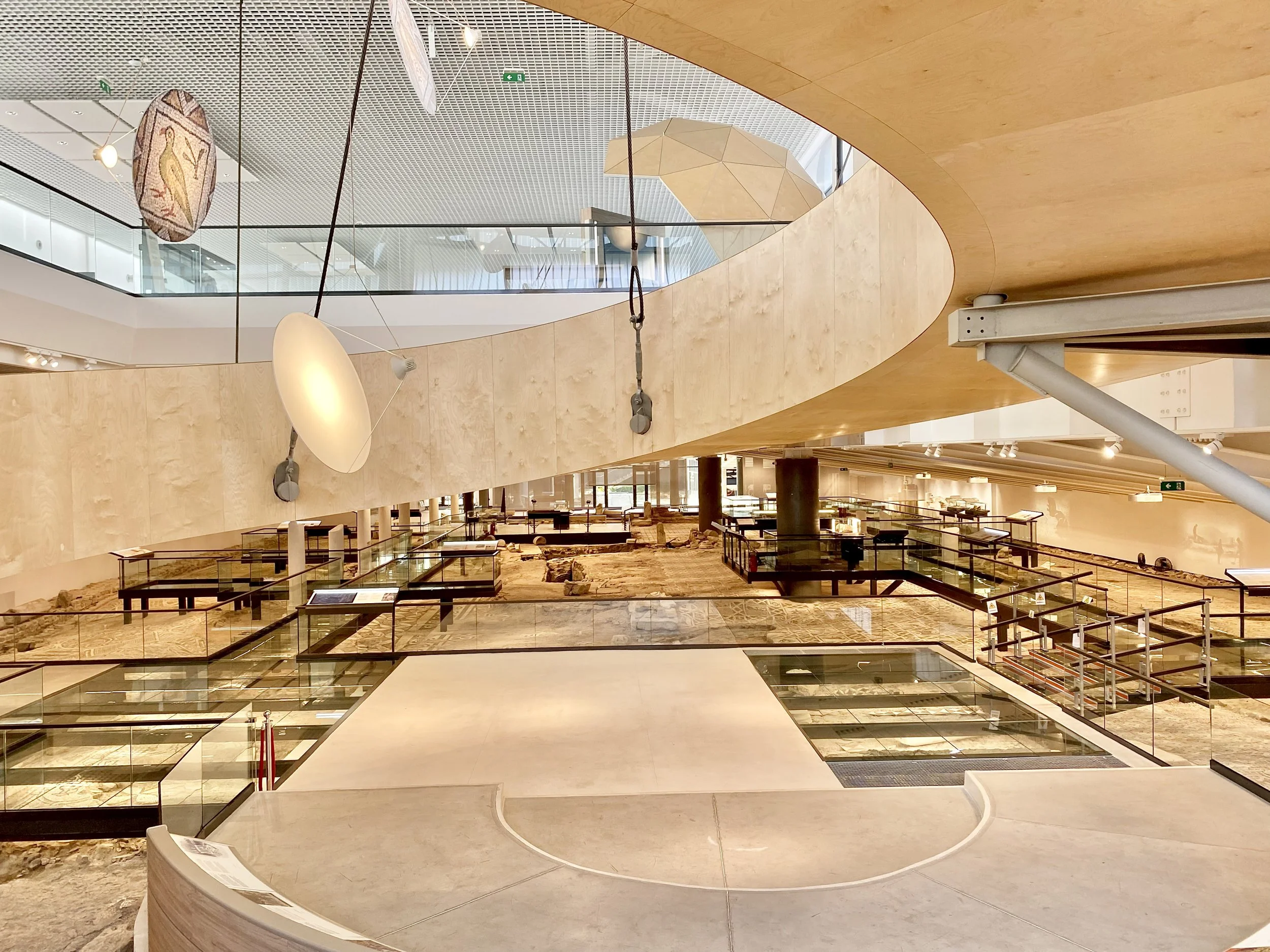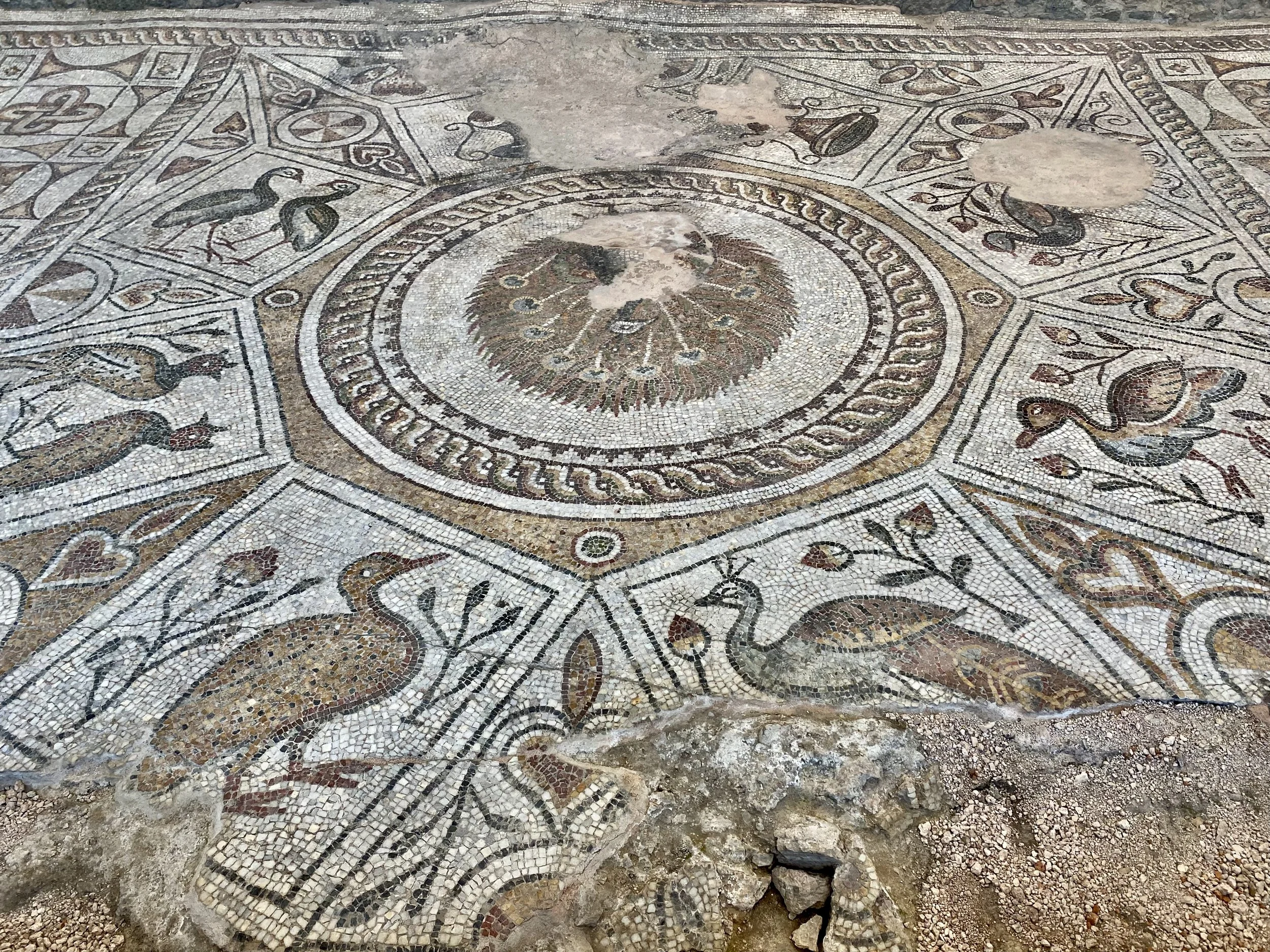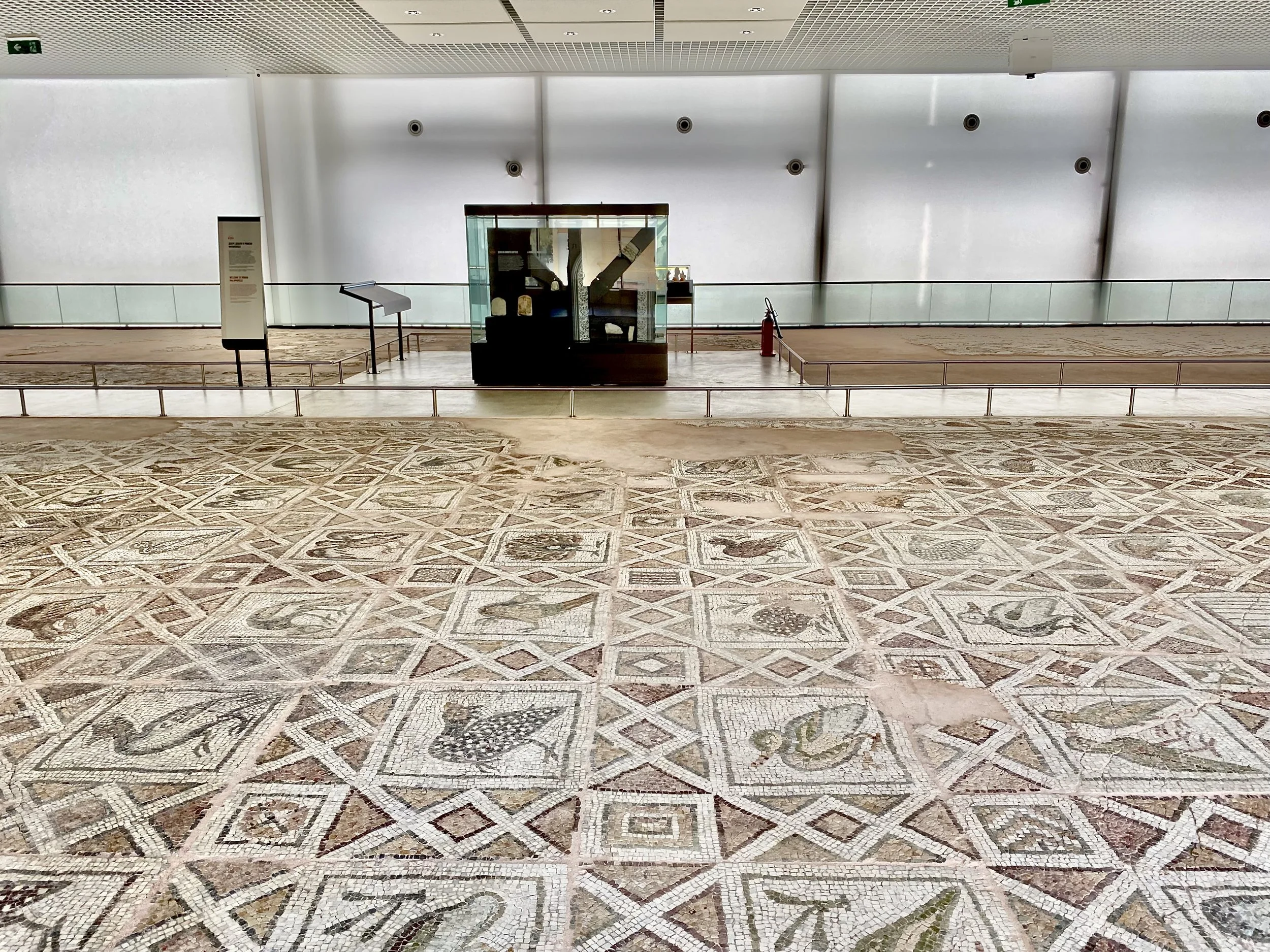Learn About Mosaics in Plovdiv
A Historic City Full of Bulgarian Renaissance Architecture
Plovdiv was first settled over 8,000 years ago, making it one of the world’s longest continuously inhabited cities. The second largest city and cultural capital of Buglaria, Plovdiv offers a unique blend of ancient ruins, national revival architecture, and a modern economy. Often sited as travelers favorite place in Bulgaria, it is a thoroughly charming city that has a way of imprinting itself on your heart.
Stroll Through the Old City
The gem of Plovdiv is its Old City - a pedestrian section with cobbled roads and Bulgarian Renaissanace architecture - marked by half-timber houses, ornate windows, and jewel toned painted decorations. The entire area is atmospheric - and it’s easy to spend hours aimlessly wandering through its winding streets.
Explore the Roman Ruins
Plovdiv has extensive ruins from the ancient Roman city of Phillopopolis - and more are still being uncovered. The highlight is its Ancient Roman Theater (in Old Town) - and as you stroll down the main pedestrian street you will likely bump into the Roman stadium, the Roman forum and remnants of an Aqueduct. Make sure to pop in to H&M to see some ruins in the basement!
Dine and Shop in the Art District
Adjacent to the Old City, Plovdiv has a vibrant, bohemian art district - Kapana. Here, you’ll find hip restaurants, arts and crafts stores, and Europe’s longest pedestrian street - Knyaz Alexander.
Learn About Mosaics
For me, the most memorable part of visiting Plovdiv was the Bishop’s Basilica - now made into a mosaic museum. The original mosaics from the church have been preserved in a modern building - and paired with modern museum features (such as a 3D virtual reality recreation of the original structure). It’s the rare museum that know exactly what it wants you to learn, walks you through it without ever being overwhelming, and consistently keeps your attention set one one object at a time.
Mosaics were historically so important in Plovdiv that there was even a verb meaning “to make mosaics.” In the museum, you’ll learn how mosaics are made, what patterns and styles are common, and how they are restored and preserved. Through the lens of mosaics, you’ll learn about the development of the city as well.
Knowing this history, it will make it more exciting when you bump into modern mosaics throughout the city (of which there are many).
Other Things to Do
The to-dos above will probably take you two or three days to do if you’re not rushing - so that may be enough to occupy your entire trip to Plovdiv. If you still have time, though, here are some of the other things you can do:
Go to a Museum: You can learn more about Bulgaria at the Ethnographic Museum or the Archaeological Museum, enjoy a rotating art exhibition at the City Gallery of Fine Arts, or learn more about Bulgarian Revival architecture at one of the refurbished museum houses in Old Town.
Catch a Sunset: Plovdiv is a city built on seven hills (now six as one was entirely mined for ore) - and has plenty of spots to catch the sunset. The most famous is Nebet Tepe in Old City - which was under restoration when I was there. Instead, I watched the sunset at the nearby Bunarjik Hill (which has a giant, controversial soviet soldier statue that will be of interest for anyone who enjoys communist history).
Take a Day Trip: If you feel like you’ve had enough of Plovdiv, you can always leave the city and go to Asen’s Fortress or Bachkovo Monastery.
Plovdiv technically can be done in a day trip - but I wouldn’t recommend doing so. The city it so atmospherically charming that you’ll find yourself wanting to move slowly and explore more. I’d budget at least two full days for the city.



